Archive for the ‘Suburban Homesteading’ Category
12 Farm Projects Made with Livestock Panels
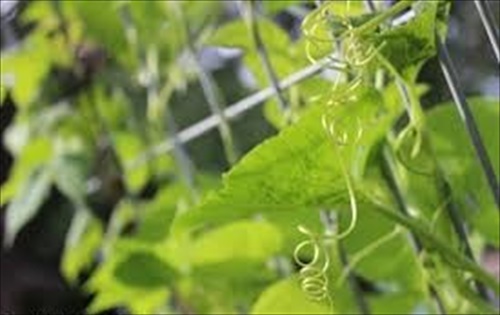
Livestock panels, sometimes called cattle panels, hog panels or sheep panels are not only a God send to fencing for a variety of animals, but have many other uses as well. Panels are 16-feet long and made of heavy gauge galvanized welded wire and vary in height from 36-inches to 54-inches. With a few panels and tee-posts, a sledge hammer and some fastening wire a single person, or two people, can create a sturdy pen for their animals.
As a single shepherd, I had no time for repairing fences or chasing escaped sheep, so livestock panels became my “go to” supply not only for fencing, but for a variety of other farm projects, from trellises for climbing peas or beans, to supports for espaliered fruit trees and berry canes, to outdoor pens for growing meat chickens and ducks.
What I especially like about these panels are their many uses around the farm or in the garden. They are more than just fencing, they are a multipurpose necessity, even on a small suburban homestead.
Check out these inspiring uses for livestock panels, or let your imagination run wild.
- Storage or Firewood Shelter
- Hog Moving Panel
- Greenhouse or Potting Shed
- Trellis for Climbing Crops & Flowers
- Support for Espaliered Fruit Trees
- Portable Chicken or Rabbit Tractor
- Arbor for Climbing Roses, Berries or Grapes
- Livestock Housing or Shaded Area
- Livestock Alley
- Livestock Hay Feeders
- Hanging Tool Rack
- Livestock Transport Box for Pick-up Truck
What great ideas do you have for using livestock panels on your suburban homestead?
The Lifecycle of Firewood
It’s rare that on a cold winter’s day while sitting by a roaring fire we think about firewood…its life or its lifecycle. But, we should.
Whether we heat our homes with gas or electric or propane or heating oil, the cost is going up, not soon to come down again. For many, the rise in cost is pushing them toward less expensive, renewable ways to heat their homes. They are turning to firewood as an alternative to turning down the thermostat, they are rejecting being cold and uncomfortable.
Fire has been used for thousands of years as a way to ward off the cold, firewood was the mainstay of keeping hearth and home together by our ancestors. Not only did they use it for heat, but they also cooked by wood burning stoves well into the 1900’s. Even now, many have grown to appreciate the warmth and beauty (if not the economy) of a blazing wood fire.
It was during one such relaxing moment in front of the fire that I began thinking about the whole cycle of what brought that stack of firewood to my house and into my firebox. I thought about the saplings I had seen on a recent hiking trip and the newly planted orchards that are plentiful in my county. I thought about the young growing trees that made up the reforested mountain areas; their lanky spires reaching for the sun above while rain and undergrowth combined with animal droppings to nourish the young fledglings as they grew tall and strong. It made me think about the part that birds play in spreading seeds to places where trees can take root. I reflected on the massive wind storm that hit our farm years ago, sending hundreds of eucalyptus trees crashing to the ground, and of the lone pine tree that fell on my truck crushing it. I thought about the men who stopped by the side of the road to cut and steal the downed trees. And, I remembered the very kind man who drove hours each day to reach our farm so he could spend the next several months cutting up those trees to sell as firewood to city dwellers, campers and BBQ joints.
My memory wandered back to a time when my family gathered firewood from open spaces and private lands in our sparsely populated area to warm our own home; and to the times when DD and I would walk the farm, picking up small rounds and branches to be cut into smaller pieces. I thought about the day trips she and I have taken in recent years to pick up truckloads of firewood from a local rancher to bring home and stack for our own use.
Lying there, in front of my own fire, I couldn’t help but think about the life of those trees with appreciation for the time of nature; of sun and wind and manure and all the good things that help grow trees big and strong; of the sweat and hard work of men who cut and split and stack, of determination and appreciation for a renewable source of heat that has basically stayed the same price from year to year for a decade. The lifecycle of trees is one of nature then nurture, as it brings warmth on a cold day.
After 15 years, I still enjoy my warm comfortable home with a blazing fire on a cold winter’s day, but I enjoy it even more now that I look upon trees with renewed awe, and think…wow, that would make some nice firewood, and in turn a nice blaze!
To learn about stacking firewood and building a heat producing fire check out these articles.
Homesteading—The Good, The Bad & The Ugly
So many people romanticize farm life. They show pictures of fluffy day old chicks, frolicking lambs in lush green pastures, gallons of frothy milk warm fresh from the udder or homemade baked goods that would make even Julia Child jealous. What they rarely talk about is the other side of farm life, the side that is not always pretty and sometimes downright depressing and ugly. That part of farm life that bespeaks of failure or sadness or a job not so well done.
I have farmed for many years, and have lived on my suburban homestead for many more, but it wasn’t until last night that I thought of myself as a failure, of someone who couldn’t get it all or keep it all together.
It was late, as usual, and I was just getting home from work and making my evening rounds. I was standing out near the barn looking out over my little farm; assessing the orchard, the garden, the barn and the chicken coop, when a rather profound thought came to my mind…”I am not very good at this anymore”, “I have become the worst homesteader ever”.
As I stood there looking out over my little plot of land, I took a mental survey that went something like this:
- I have a wonderful barn, one that has housed sheep for shows, rabbits & chickens for meat, and laying hens for eggs, but one that is in desperate need of cleaning and painting.
- I have a chicken coop with one hen. ONE! The others were picked off by a marauding opossum over the past few weeks. The one I have left is not even laying, so we are eggless to boot. I can’t stomach the idea of eating store bought eggs so we have gone without.
- My attempt at growing sweet potatoes in an unused water trough was an epic failure, and the weeds in my garden are more prolific than the vegetables. I did get a few spindly cabbages (that I fed to the chicken). I guess that’s something.
- My fruit trees have produced very little. A huge windstorm that followed the spring bloom blew off most of the blossoms and small fruit. I got two Fugi apples, barely enough for a rustic apple tart.
- My most productive haul was from an espaliered pear tree that I planted last year. I got about three dozen Asian pears that were absolutely divine.
Overall, the year has not been good, which made me feel like the worst homesteader ever. I blog about homesteading on a suburban lot, but it’s pretty uninspiring when a homestead blogger has no chickens, no garden, and no produce.
After 15 years on my homestead (and another 15 on a larger farm) one thing is for sure—farming is unpredictable—it has its ups and downs, it ebbs and flows with good years and bad. It helps if you’re not work 60-70 hour weeks at an off-farm job, but that is my life right now
There have been years when our little farm has produced more than we can use…making me feel like I should get an award for small plot farming…And other years? Well, it’s all we could do to keep the animals alive, get to our shows, manage school and work, and put a few greens on the table.
Thank God I’m not dependent on my farm for survival, or some years we’d be doomed.
But here’s the thing…I couldn’t care less. I’m fine with good days and bad days; productive years and not so productive years because modern homesteading is more about the journey than the destination. Sure, I’d love spending ALL day tending my farm, digging in the garden or preserving the harvest, making quilts or cooking homemade meals, but that’s not realistic. Neither is spending every weekend working on the farm rather than living. We all have a life outside of our farm life, or at least we should.
But, in reality, more times than not I have something to celebrate and that’s precisely what I intend to do—celebrate my accomplishments, regardless of how small they seem to be. Accomplishments like:
- Enjoying a light lunch of fresh made chevre and home baked bread on a glorious fall day. The milk came from a friend’s dairy goats and was mixed with herbs from an herb garden planted just this summer. The bread makings are part of my well-stocked pantry.
- Transforming a paltry apple harvest into a delicious (and easy to make) rustic apple tart that was enjoyed following a roasted lamb dinner. The lamb was raised here and put in the freezer last year and the carrots for a Woodcutter’s Carrot side dish came from a local farmers market.
- Raising a farm kid who just graduated college and is pursuing her own independence while planning for a farm life of her own.
- Growing a friendship that not only provides a wonderful supportive relationship, but goat’s milk as well. My schedule doesn’t allow time for dairy animals (as much as I would like it to) so this is the next best thing.
- A fully stocked pantry that allows me to spend more of my free days homesteading and less time shopping in town.
Over the years I’ve learned that not everything is sunshine and roses, not everything attempted is a success. Failure is a fact of life and you can either embrace it or be so afraid of it that you shy away from trying anything new or different. I don’t ever intend on being like that. I’m too curious a person to be daunted by the possibility of failing.
Someone once said that, “you learn more by failing than by succeeding”. I think that’s true because when I fail I have the chance to pick myself up, dust myself off and try again. And, that’s exactly what I intend to do with my homestead—start again—like any good farmer would.
So, here’s what I’m going to do after brushing myself off:
- I’m going to my local farm stand and buy myself some new hens. They order day old chicks in the spring, use them for educational purposes at the farm before selling them off in the fall so they don’t have to be cared for during the winter. It’s a great deal. I don’t have to brood them or grow them out until they are old enough to lay. They are laying already!
- I’m going to enlist some help and do a major garden clean-up; clearing weeds, fixing the raised beds, and installing a better watering system that won’t require me to spend hours each day with a hose in my hand. I’m already excited because there is nothing better than spending time in the greenhouse starting seeds, planting them out and watching the garden grow lush and green. I’m also going to renew my pumpkin patch because I truly miss those wonderful orange orbs peeking through their giant green leaves.
- I’ve always wanted a small flower bed outside my chicken coop and a load of free bricks I got a while back will be perfect for the edging. It will make a wonderful “bee friendly” flower bed near the fruit trees.
- The barn is getting a complete cleaning, top to bottom, well, top to dirt floor. The nesting boxes will be cleaned out, refilled and waiting for the arrival of the new hens, and I’ll make space to store all my long-handled gardening tools.
My lists can sound daunting, but I’m excited about the opportunity to start afresh, shaking off the bad year and looking forward to all the possibilities of new successes.
We’re not perfect, here. It’s nothing like a television show. Some years are wonderful and everything hums along beautifully, while other years are messy and epic failures.
But, like I said, homesteading is a journey and not a destination. As long as I’m enjoying the journey and excited about renewed possibilities, my enthusiasm for living a farm life in the ‘burbs will not be dampened. So, not to worry folks, I’m not going anywhere. Rest assured you’ll be hearing about the whole beautiful, dirty, glorious, messy thing—the good, the bad, and the ugly.
I Can So Relate
I stumbled across this, can’t remember where, but it spoke to my inner farm girl.
“I used to admire fashionably dressed and impeccably groomed women. Now, when I see homely dressed women at the wheat and produce pick-up spots, I wonder what they could teach me about food preservation and living a more frugal life”.
12 Ways to Begin Homesteading in Suburbia
It’s a lazy summer day laying on my vintage patio daybed.
I close my eyes, drifting away as a warm breeze envelops me. My mind meanders to gently rolling hills with green grass swaying in the breeze, pastures dotted with grazing sheep, new spring lambs sprinting from mama to mama, a dairy cow lying quietly chewing her cud, and a steer growing fat waiting to fill a family’s freezer. I see chickens clucking and scratching around the barnyard and bees buzzing in the garden.
BUT,…
…and there’s always a but, isn’t there?
When I open my eyes instead of rolling pastures and a white picket fence I see a house on a small lot at the edge of town. Not exactly the picturesque farm I see in my mind’s eye.
That suburban reality is the reality for most of America.
But, (again with the but)
A suburban dwelling doesn’t mean you have to give up your homesteading dreams. It only means you have to readjust your thinking about what homesteading is.
Modern homesteading means different things to different people. One person might be interested in old-time remedies to keep their family healthy, while another embraces baking bread or growing herbs on an apartment balcony, and yet another combs yard sales and antique auctions for vintage watering cans or Mason jars to adorn a kitchen or patio.
Today’s homesteader can be whatever they want to be, they are not bound by the realms of farms, small towns or rural life.
Different strokes for different folks, right?
We do have a few similarities with our more rural cousins, though. We crave returning to our roots, to old time skills and a slower way of life. We want to create a more self-sufficient life for ourselves and our family. We want to be self-reliant.
If this sounds like you, you’re in luck. There is no requirement that a homesteader must live in the country or on 100-acres. You can do it right now, right where you are, even if where you are is a downtown apartment…a city lot…or a 1-acre plot.
So let’s get you started with 10 simply things you can do right now to set yourself on the path of becoming a modern day homesteader.
1. First and foremost…decide what you want as a homesteader. It may sound simplistic, but it is actually crucial and sometimes very difficult to decide what you want or why you want to homestead. Do you want it all—gardens, orchard, animals, the whole shebang? Or, do you only want pieces of a homestead life, like baking bread, canning vegetables or growing flowerbeds. The choice is yours, so take your time. There’s no right or wrong way to homestead in our modern world.
2. If you decide to “go big” then you’ll need to assess your property. What do you have room for? What don’t you have room for? What are the “must haves”, and what are the “can do with outs”? This is an important step so you don’t over extend yourself or your property. Be realistic about you and your property. While homesteading can be fun and rather addictive, it WILL be a whole lot of work. The more you have, the more work there will be and your homesteading journey won’t be so fun in the end if you overextend yourself.
I moved into my 1/3-acre home on Labor Day weekend and spent the entire winter drawing plans and laying in supplies for my “bigger picture”. By early spring were we ready to rock the barn building and garden layout.
Remember…a homestead is a constant work in progress, enjoy the journey.
3. While you’re pondering Steps 1 and 2, do some fun things.
Create a potted herb garden even if it’s on your balcony, windowsill or patio.
Begin seeking out new recipes to start cooking from scratch more often.
Try your hand at making a simple chevre cheese.
Teach yourself to bake bread, even if it’s with a bread maker.
Whip out your sewing machine and make an apron.
Here are a few ways to begin homesteading in suburbia:
4. GROW SOME OF YOUR OWN FOOD.
No matter how big your garden is you will relish a bounty of fresh veggies that will provide you with nutritious, pesticide-free meals, and save you money in the process. There are many types of gardens perfect for any suburban homestead no matter where you live. There is the traditional backyard garden with lots of raised beds or rows of produce. There’s edible landscaping where fruits and vegetables are intermixed right alongside your other plants. Then there’s potted gardens that are perfect for small spaces or apartment living. Fruit trees can be planted to take the place of shade trees giving you useful shade and using valuable water to produce food for your family.
There are few things more fulfilling than taking a bite out of a juicy, sweet, unbelievably tasty tomato that you just grew yourself. The difference in taste between those and the ones picked green and shipped from Central America or halfway across the country is absolutely astounding.
5. SET UP A RAIN BARREL AND COLLECT WATER.
Rain water is one of the few free things in this life, so why not collect it to use in the garden. Many cities have water collection programs where rain barrels are free or at a low cost. The water you save can add greatly to your household savings, especially during dry spells. Diverting grey water from the washing machine can also add to your water savings program.
6. PREPARE FOR THE UNFORESEEN.
Life is unexpected at best. We never know when the next storm will hit, knocking out power or making it impossible to get to town. The best precaution to any natural disaster is a well-stocked pantry. A closet, the basement or an extra bedroom can all be outfitted with shelves and stocked with staple items and family favorites.
Picking up a few extra items at the market will have your pantry stocked in no time. And, if a natural disaster never strikes you will have put food away at a lower price than future inflated prices.
7. CAN OR FREEZE FOR LONG TERM STORAGE.
Once you’ve had a few fresh veggies from the garden and gotten the hang of cooking from scratch chances are you won’t want to go back to store bought foods, especially if you live in an area that has long, cold winters. Preserving the harvest is the next logical step in your homestead journey. There are many ways to preserve—canning, freezing, dehydrating, salt curing, pickling, fermenting, root cellaring and more. Start with something simple, like homemade pickled beets. They are practically full proof!
8. RAISE YOUR OWN CHICKENS.
Chickens are my “go to” livestock for beginning homesteaders. A small flock of 3 to 4 laying hens is fun, easy to care for and will give you fresh eggs for the kitchen and manure for the garden. You can build a simple coop in an afternoon, or be creative and look for a large used doghouse or garden shed. Be sure to check out local ordinances so you know if you can have them and how many you are allowed.
9. START A COMPOST PILE.
A compost pile is a must have for any homestead. The rich soil you make from decomposing kitchen scrapes, grass clippings, fall leaves and manure will improve your gardens and give you a better bounty. Fall is the perfect time to start because of all those free leaves. Four wooden pallets is q quick and easy way to start making your own soil.
10. BUILD YOUR COMMUNITY.
New homesteaders may find the process of starting to homestead a bit daunting, but once you start talking to people you will quickly realize there is a whole community of like-mined people out there who are dying to help you be successful, so embrace their generosity. A great place to start talking to people is the Farmer’s Market, a local farm stand or plant nursery. While you’re making plans you can gain knowledge and build friendships that will carry you into the future.
Another great way to meet new people and get your kids involved in your homesteading journey is to enroll them in a youth program that focuses on the many areas of homesteading. 4-H and Grange are both farming centered programs that have lots to offer. Check out your county Cooperative Extension office or Grange Hall for programs near you. You will build lifelong skills and friendships while also learning about leadership.
11. SET UP A CLOTHES LINE.
This sounds so simple, I know. Sometimes it’s the simple things that really get you inspired to do more. My outdoor clothesline was the first thing I put in and the time I spend hanging clothes or taking them down is one of the most enjoyable parts of my day. It’s kind of therapeutic as well as being productive.
12. BUILD YOUR SKILLS.
No matter what kind of homestead you decide on you will need many skills to make it work. From gardening and preserving to building or cutting firewood, now is a good time to start. Learning can take place in classes offered at local Grange Halls or home improvement stores, on the internet watching YouTube videos or by spending time in the library or bookstore reading about the skill you want to learn. But, don’t forget to put your new found knowledge to work by practicing what you’ve learned. Be patient too. And remember, a homesteader is a lifelong learner willing to continue gaining skills throughout their life.
I’ve barely scratched the surface here, but this will get you started and hopefully inspire you to delve deeper into the wonderful world of homesteading.
Check out our categories for lots more information on turning your suburban lot into a productive mini-farm.
The ABC’s of a Homesteading Life

Apples hang low on branches that bend to the ground. Picking time is just around the corner. There’ll be cold crunchy crispness for fresh eating, sliced sweetness in pies and tarts, savory baked apples and “just past prime” apples cooked down and made into an applesauce that is perfect with a succulent roast pork.
Bread rises in the warmth of a kitchen then is pulled hot and fresh from the oven on a holiday morning, smothered in butter or honey or a homemade summer jam. It’s heady aroma filling a quite farmhouse.
Chicks pip and crack, making their way, wet and weak, from the warmth of their eggshell cocoon. They grow plump and fat, peck and scratch the ground, finding bugs and worms while growing into stately layers or succulent roasted dinners.
Daydreams. A cool, late summer evening to celebrate the past and dream of the future; to praise protectors that make it possible for a single mom and a child to live a farm life, at the edge of suburbia with the help of a few good friends, a pen full of lambs and a coop full of chickens.
Eggs hidden in corners and behind bales of hay like small nuggets of buried treasure, waiting to be collected or hatched to replenish an aging flock, or cooked into a hearty breakfast fit for a farm girl.
Fruit trees spread their branches, pushing their blossoms out to become a new year’s crop blushed by the sun and ripened in the heat of summer.
Gardens grow rich and green; tangle and twine through their beds before producing brightly shaped crops perfect for eating fresh, freezing or canning.
Hands dive deep into rich black soil, making way for a fall sowing of seeds. Pulling spent crops, moving manure from coop to compost and from compost to bed.
Imaginations wander, thoughts emerge, ideas form and a town lot slowly transforms into a productive oasis of food and fiber; simplicity and self-reliance.
Jam bubbles and sputters on a red hot stove; releasing its summer juices for a concoction that will remind us of warmer weather on a cloudy winter’s day.
Killing goes hand-in-hand with the raising and growing, providing the family with safe, wholesome food for the year. Prayers go up from grateful hearts for an animal’s good life, which sustains ours.
Lambs jump and frolic, getting strong and fat on good feed. Their fate…to some a cold death, to others a year’s worth of dinners wrapped in paper and stacked in a freezer.
Mason jars line the shelves, gleaming with our brightly colored harvest; enough to feed a family all winter long.
Night time falls silently over our little farm, quietly relinquishing its hard working inhabitants to sleep.
Owls hoot from high in the trees, swooping down to earth anytime a mouse scurries across its path.
Pumpkins gleam in the dusky autumn sun, waiting to transform our farmhouse into a fantasy of fall splendor before being turned into pies and butters and breads and cakes.
Quilts lay out like rainbows over the horizon; pieced together from scraps of fabric or worn out favorites to keep a family warm from the harsh winds of winter.
Rain storms roll through the valley, coming down in sprinkles and showers; downpours and droves, nourishing the parched spoil, renewing life on our little farm.
Season’s change; from the long sunny days of summer filled with fresh eating from the garden to the cool crisp days of fall and harvests put up for winter store to the promise of spring with the turning of soil and the planting of seeds.
Time chases us as we plan and work and move toward a more self-sufficient life, building and planting to live self contained. But, time is also our friend, for life is about the journey and not the destination.
Understanding comes from days working the soil or tending the animals. Old worries, past ambitions, long held desires fade into the distance as new truths take hold and become part of who we are becoming.
Victories abound on our little farm; barns are raised, skills are learned, chicks are hatched, kits are born, lambs grow, gardens produce and animals give their lives to feed a grateful family.
Wash hangs on the line, blowing in the soft breeze, taking in the sweet scent of a contented farm.
X-altation from a life lived simply brings contentment and comfort.
Yarn spun from a harvest of wool; washed and carded and put on a wheel, wraps around clicking needles or flies through the strings of a loom; emerging as hat or scarf or sweater, bringing warmth and comfort to the wearer.
Zucchini’s flourish in compost rich beds; dark green and golden yellow even striped become the base for breads or cookies or muffins; sliced or sautéed or stuffed and baked. They become the center of our meals.
We have come a long way since the first spade plunged deep into the soil; the first animal walked our land. We have much still to learn, but we produce our own crops and raise our own meat. That’s enough.
For now.
Grass fed vs. Grain fed – A Suburban Homesteaders Dilemma
Staunch disagreements sweep across the country debating the benefits and economics of grass fed animals versus grain fed. Pasture raised meat might be better for you, but that could depend on the quality of the pasture they are raised on. And, when it comes to the taste and tenderness of the meat the grass vs. grain could bring a whole different story to light.
Grass vs. grain is an added dilemma, especially for suburban homesteaders or those trying to live a self-sufficient life on a parcel too small to pasture large meat animals successfully. This has always been our challenge…wanting to raise quality meat and process it humanely, but not having the space for them to roam as we’d like.
Our dream may be of wide open spaces, rolling grasslands dotted with livestock, but our reality is not that grand. For us, our reality is a 1/3-acre lot at the edge of town, with pens large enough for animals to roam around and laze in the sun, and sheltered areas so they can come in from the rain.
Old-time farmers and leather-faced cowboys may scoff at the idea of raising a hog or lamb in a few months on feed store grains. They may prefer the aged taste of hogs raised mostly on acorns, or beef raised on the range. My late father-in-law had a way with meat, whether it came from the range, the barn, the grocery store or was hunted. He had his special mixes of herbs and spices and rubs. He was particular about how to rub the meat, whether to inject brine into a turkey or lamb before cooking. And, of course, there was the wood he used for smoking; hickory for hams, cedar for fish and citrus for lamb and poultry. He was very specific that each wood gave the meat a distinct flavor. But his steadfast rule, the one he never altered from, was that to get a moist, juicy and tender piece of meat you must cook it low and slow. That was his motto.
Over the years, I have raised animals on pasture while living on a 700 acre farm and in smaller accommodations now that I live on a 1/3-acre suburban homestead. I have followed the principles of good nutrition, given my animals plenty of water, fresh air and sunshine. And, I’ve tried to follow my father-in-laws instructions on how to cook meat. His work was magic that was not pasted down, though.
I have butchered year old rams raised on pasture, 6-month old freezer lambs raised on grain and hay, and 7-week old chickens, rabbits and ducks raised on our suburban homestead. I have developed my own style of cooking, not so similar to his, but one that is all my own. But, the real reason our meats tastes so good is not because it was raised on grass or grain, but because I became a better cook over time.
Tonight I enjoyed a lamb shank dinner. It’s a cheaper cut of meat that can be tough whether raised in a factory, on a farm or on a suburban homestead. I dredged it in flour and seasoned it with salt and pepper before searing it to seal in the juices, but that was just the beginning of creating an entrée that would end up falling off the bone and so tender it would almost melt in your mouth.
The magic was in the olive oil and balsamic vinegar; the spices, wine, garlic, and herbs that I have learned to use from fellow sheep breeders, cooks and fine epicurean magazines. Out came a shank as luscious as any rack of lamb, leg or loin produced by a 5-star restaurant.
Even a cheap chicken wing can taste like manna from heaven if you use the right seasonings and the best southern frying methods. You can even make cardboard taste good with the right seasonings and cooking techniques.
I think the taste of our chickens today is influence somewhat by their ability to grub around in the dirt, and the way in which we butcher, cool and freeze them, and I know that our home-raised lambs taste a lot different than what I’ve eaten in restaurants, but the real difference is in the art of the kitchen. My chickens taste just as great whether they are raised on feed store grains or kitchen scrapes, worms and bugs.
So…what’s the point of my story?
Just this…
Don’t get hung up on whether you have rolling pastures for grazing or a round pen on a suburban lot for grain-fed. The bigger issue, the bigger point is that you are raising something on your own, for your own family. You are learning about animal husbandry, processing livestock and stocking up; taking one step closer to being as self-sufficient as you choose to be. And that in itself makes a great end product. That’s the magic!
Like Whispers in the Wind
I chanced upon an interesting documentary this evening. It was about the American Cowboy; the life, the land and their deep unfailing love for them both. No matter what the day brings, the harsh weather that makes it challenging to get day-to-day chores done or the cold that can kill a newborn calf in a few minutes, they wake up each day feeling part of a proud, strong past. They seem hidden though, out of sight of normal people, tending to cows and horses; bringing food to millions of people every day. We may not see them, but we revel in their hard work and dedication every time we grill a steak, buy a burger or put on a pair of leather shoes.
It was fascinating listening to these hard chiseled men with their long mustaches and weathered faces talk so eloquently about what it means to be a cowboy. These are not the rough riding, gun slinging, hard drinking, trouble making men we see in the movies, but soft spoken sometimes shy men of few words. When they do speak, they speak with tenderness and conviction and a deep seeded love for what they do that many of us may never understand.
They worry too, same as we do. These are not ignorant men, spending their life in vast, sparsely populated areas of the country cut off from the troubles of our modern world. They speak profoundly about their concerns for the country, the land and their way of life. They fear the disconnect between themselves and the people who consume the product they raise, and the consumers ignorance of how their food gets to their table will, in time, destroy the cowboy way of life.
It was during one such interview that a gray-haired cowboy in his mid-fifties referred to a quote by William Jennings Bryan, “Burn down your cities and leave our farms, and your cities will spring up again as if by magic; but destroy our farms and the grass will grow in the streets of every city in the country.” The cowboy looked sad and a little forlorn staring off into space, as if he could see to the end of the trail and it was desolate.
I think we get so caught up in our every day lives that we forget about this different world out there—ranches that stretch out for hundreds of miles and the quiet life of men who tend stock. As homesteaders, we know that beef comes from cattle, but do we really understand or appreciate a life lived in quiet isolation. These men and their lifestyle are like whispers in the wind; seldom heard and rarely seen, but their existence is felt in every restaurant and fast food joint and grocery store in the country.
And, since I’m not at a point where I can raise my own beef, I for one will be sending up a silent prayer of gratitude and thanks tonight.
Farmland the Movie
Most Americans have never stepped foot on a farm or ranch or even talked to the people who grow and raise the food they eat. The connection between production Ag and consumer has slowly dwindled since the end of WWII. The majority of the population is comfortably ensconced in urban centers or suburban outcroppings, blissfully unaware of where their food comes from, how it gets to them and what, if any, the ramifications would be should farming decline or a break in supply occur.
Regardless of how you feel about conventional, commercialized farming; no matter how much you wish small diversified sustainable farms would prevail, the American Farmer still feeds, not only our nation, but many others throughout the world. With just 2% of the population engaged in farming, and the average age of a farmer well into their 60’s, America and the world will be reliant on the next generation of young farmers to produce the world’s food.
Farmland takes an intimate look into the lives of farmers and ranchers in their ‘20s, all of whom are now responsible for running their farming business. Through this film from award-winning director, James Moll, you’ll step inside the world of farming for a first-hand glimpse into the lives of young farmers and ranchers. Learn about their high-risk/high reward jobs and passion for a way of life that has been passed down from generation to generation, yet continues to evolve.
I urge you all to take the time to watch this movie when it comes out in March 2014, and then take the next step to acquaint yourself with farmers in your area. Learn how your support of the Ag community can help not only understanding of a way of life that is hidden from most of Americans, but also bring engagement into discussions of how to make it better, for the benefit of all.
Finally!!!
After months with nary a drop and a drought that threatens house, farm and factory the skies FINALLY opened up at the close of dusk today. The storm that was promised days ago has arrived with more than half an inch so far. It’s a far cry from the 15+ inches we need to get us back on track, but it is a welcome beginning.
The long awaited pinging off the roof is a beautiful sound as I hunker down in front of a warm fire watching an HBO mini series about our Founding Fathers. What could be better?
All I can say is Halleluiah! Keep it coming.
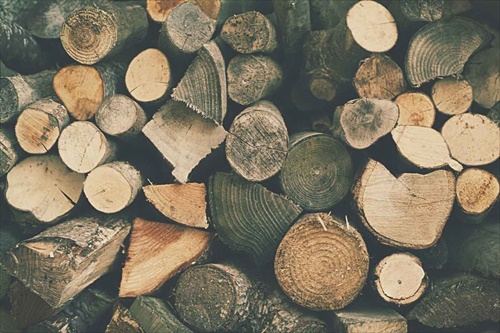
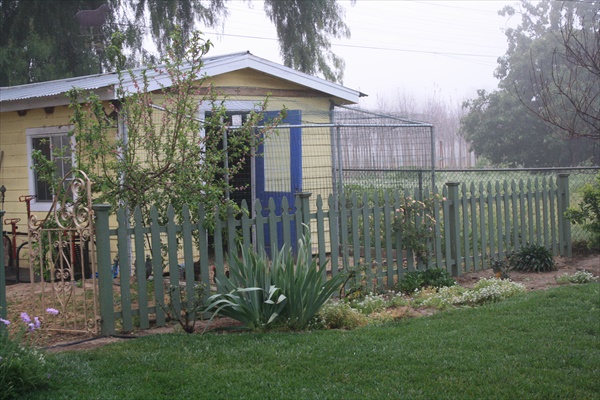
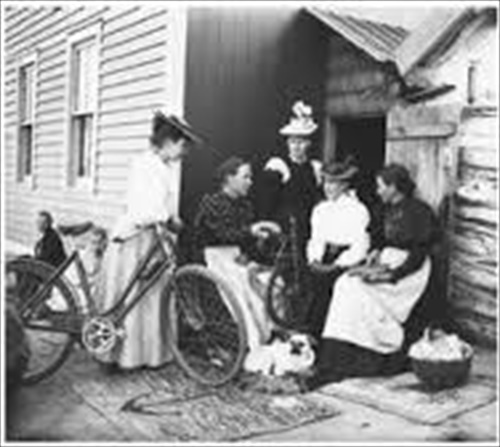
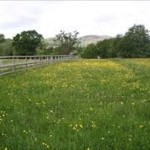
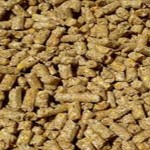

Recent comments
Aenean nonummy hendrerit mauris. Phasellus porta.